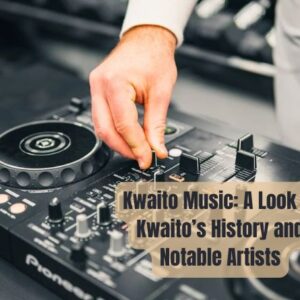Bongo Flava is Tanzania’s most popular and influential music genre, blending Swahili rap, Afrobeat, R&B, reggae, and traditional Tanzanian rhythms into a contemporary urban sound. Rooted in storytelling and everyday life, Bongo Flava has become a cultural powerhouse across East Africa and beyond. In this guide, explore everything you need to know about Bongo Flava’s origin, evolution, style, top artists, and global reach.
Check Latest Tanzania Music Updates
What is Bongo Flava? — Tanzania’s Urban Music Identity
“Bongo Flava” is derived from the Swahili word “Ubongo” (meaning “brain” or “intelligence”), a nickname for Dar es Salaam, and “flava” meaning flavor. It represents a vibrant mix of modern and traditional influences that reflect the urban youth culture of Tanzania.
Bongo Flava incorporates:
-
Hip-hop and R&B-inspired beats
-
Afrobeat and traditional Tanzanian instrumentation
-
Swahili lyrics often focused on love, life, and social issues
-
Melodic hooks, rap verses, and soulful choruses
It’s a genre deeply rooted in Tanzania’s social fabric, speaking directly to the youth while evolving with global trends.
Historical Context: The Birth of Bongo Flava
Bongo Flava emerged in the early 1990s as Tanzanian youth began localizing American hip-hop culture.
-
Early 1990s: Inspired by American rap and R&B, Tanzanian artists started performing in Swahili, adding local sounds.
-
Radio & Mixtape culture: Platforms like Radio Tanzania and cassette mixtapes helped spread Bongo Flava.
-
Cultural adaptation: Instead of copying Western styles, artists focused on African identity, language, and issues.
By the 2000s, Bongo Flava had become a dominant genre not only in Tanzania but also across East Africa.
Key Elements of Bongo Flava Music
-
Swahili Lyricism: Lyrics are poetic, emotional, and often socially conscious.
-
Rap & Melodic Fusion: Songs often include a mix of rapping and melodic singing.
-
Afrobeat, Dancehall, & R&B Influence: Beats are groove-heavy but soft enough for storytelling.
-
Catchy Hooks & Choruses: Built for radio and dancefloors alike.
-
Themes: Love, urban life, political commentary, family, and personal hustle.
Leading Bongo Flava Artists You Should Know
Diamond Platnumz
The most recognized global ambassador of Bongo Flava, known for hits like “Jeje”, “Waah!”, and “African Beauty”. He has taken the genre international.
Ali Kiba
A pioneer and musical rival of Diamond, Ali Kiba is known for blending Bongo Flava with taarab and Swahili soul.
Harmonize
Formerly signed to WCB (Wasafi), Harmonize now runs his own label and continues pushing Bongo Flava to new audiences.
Zuchu
A rising star under Wasafi Classic Baby, Zuchu combines poetic Swahili writing with vibrant pop melodies.
Bongo Flava’s Global Reach and Impact
Bongo Flava has become an East African cultural export and is gaining traction internationally thanks to streaming platforms and cross-border collaborations.
-
Collaborations: Tanzanian artists have teamed up with stars like Ne-Yo, Rick Ross, and Burna Boy.
-
Streaming success: Bongo Flava dominates platforms like Boomplay, Audiomack, and YouTube across East Africa.
-
Cultural pride: Swahili has become a musical language of choice, promoting Tanzanian identity worldwide.
Why Bongo Flava Continues to Thrive
Bongo Flava is more than music—it’s a storytelling tool, a form of resistance, and a mirror of Tanzanian society. Its ability to blend modern soundscapes with traditional values ensures it remains relevant across generations.
Final Thoughts
Whether you’re a fan of catchy love songs, socially aware rap, or feel-good dance tunes, Bongo Flava offers something unique. It’s a genre that embodies the soul of Tanzania—smart, emotional, and rhythmically rich. As it continues to evolve, Bongo Flava remains a cultural voice for East Africa and an emerging force in global pop music.




